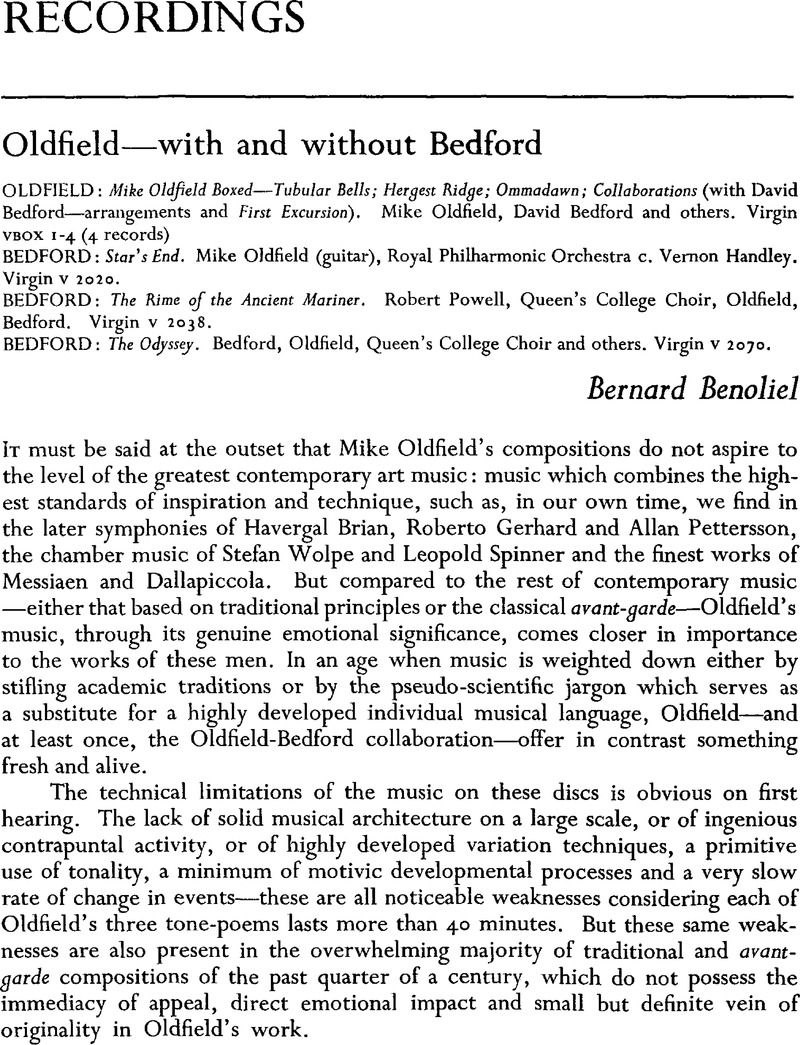No CrossRef data available.
Article contents
Recordings
Published online by Cambridge University Press: 04 February 2010
Abstract

- Type
- Recordings
- Information
- Copyright
- Copyright © Cambridge University Press 1977
References
page 28 note 1 Malcolm Barry's ideas on Bedford's purported ‘ahistoricity’ in the latest issue of CONTACT are historically without justification: Palestrina and the ‘Roman school of Polyphony’, Johann Stamitz and the Mannheim Group, are equally examples of composers turning from the complexities of existing traditions and beginningnew traditions (which of course eventually led to new complexities). In fact Schoenberg's serial conception in its primal form was just such a turning-away and simplification. All a composer needs to learn from the history of his art is the techniques and aesthetic points of view he feels will help him achieve his own personal vision. The very fact that it sustains every conceivable type, from the starkly simple to the highly complex, is 20th-century music's chief delight.
page 29 note 2 At the Royal Albert Hall on 25 January, conducted by David Bedford.
page 38 note 1 The Seventh is on Decca SXL 6538; the Second on Swedish Discofil and the Tenth on Swedish EMI
page 38 note 2 See Paul Rapoport's review of the Ninth Symphony in TEMPO 118.




